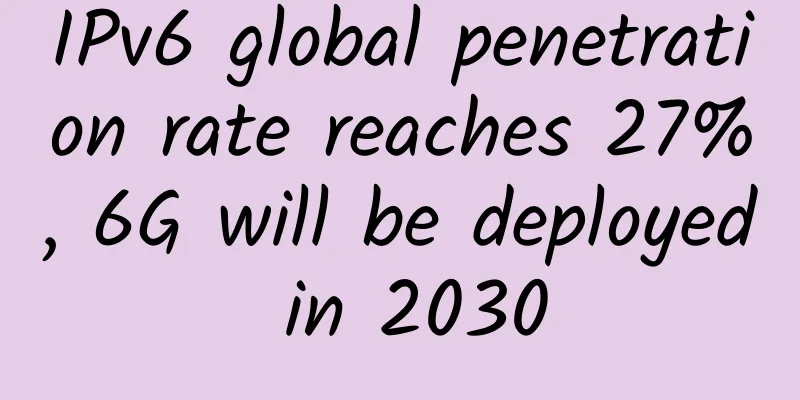IPv6 global penetration rate reaches 27%, 6G will be deployed in 2030

|
Recently, Latif Ladid, chairman of the National IPv6 Forum, mentioned in a public speech that the global penetration rate of IPv6 has reached 27%, and China's IPv6 Internet users have exceeded 200 million. At the same time, he mentioned that the world has also begun to study 6G. The IPv6 protocol has been highly promoted in recent years. With the popularization of the Internet and the impact of artificial intelligence technology on online and offline development, the number of IPv4 addresses is no longer sufficient, which has become a problem that troubles countries. Therefore, the upgrade of the IP protocol has become more and more urgent. Compared with IPv4, the 128-bit IP address length in IPv6 will increase 340 trillion IP addresses, which can basically meet the needs of the future Internet world where everything is connected. Latif Ladid pointed out that India and China will be the largest user markets for IPv6. In terms of user scale, India is the largest with 250 million users, while China already has more than 200 million IPv6 Internet users. It is understood that China's Alibaba Cloud and Tencent Cloud already support IPv6 services, and many products under Alibaba and Tencent already fully support IPv6, such as QQ, Taobao, etc. Data shows that as of the end of March 2019, countries or regions with a global comprehensive IPv6 deployment rate of around 30% or above accounted for more than half of the map area, and the proportion of users using IPv6 to access Google's network has exceeded 27% of the total number of users, indicating that the IPv6 ecosystem is taking shape. Liu Dong, director of the National Engineering Center for Next Generation Internet, also said that China will comprehensively upgrade IPv6 at the national level and use 5-10 years to build the world's largest IPv6 commercial network to realize the interconnection of all things. At the same time, the deployment of global 5G networks also requires the continued advancement of IPv6. Latif Ladid said that in addition to 5G, many countries are currently researching 6G, which can reach a speed of 100G/s and is expected to be deployed around 2030. |
<<: 10 ways to improve Wi-Fi signal when surfing the Internet
>>: Why are 5G chips so expensive?
Recommend
Critical documentation in data center transformation
Documentation is often neglected in IT work. When...
80VPS: US 8C cluster server monthly payment starts from 800 yuan, Hong Kong 8C cluster server monthly payment starts from 1000 yuan
Recently, some readers asked about cluster server...
Five-minute technical talk | The underlying origin of scene broadband
Part 01 QoS Service Domestic operator networks ge...
Artificial intelligence builds an iron wall of network security
Every moment, thousands of scientists around the ...
Huawei Mate X: The Future of the Future
Looking back at the year 2019 that is about to en...
What exactly is HTTP3 that international companies such as Google are beginning to support?
There has been a lot of news about HTTP/3 in rece...
China Mobile's 2G network will be cleared and the network will be withdrawn? It still needs to continue to "ride the wind and waves"
The three major operators are accelerating the sp...
spinservers US servers start at 33% off, 100M unlimited traffic servers start at $69/month, 10Gbps bandwidth servers start at $139/month
spinservers has sent the latest 2023 US Labor Day...
HostSlick: Netherlands high-security VPS from 5.99 euros/month, 1Gbps unlimited traffic, optional OpenVZ/KVM architecture
HostSlick is a foreign VPS service provider found...
What problems can blockchain solve in the real world IT field?
The tech world has long embraced high-risk, high-...
5G has great potential in promoting the development of industrial Internet!
[[412406]] As an industry that deeply integrates ...
A Five-Star End-User Experience Requires Unified Digital Experience Management
Introduction To deliver a five-star digital exper...
5G co-construction and sharing: the simple "saving money" mentality is not advisable
On June 6, after China issued 5G commercial licen...
What does the operator's first-half performance reflect about the second half of the year?
With the release of the operating data of the thr...
Not enough data? Facebook will help you find free WiFi nearby
[[177139]] According to foreign media reports, Fa...









